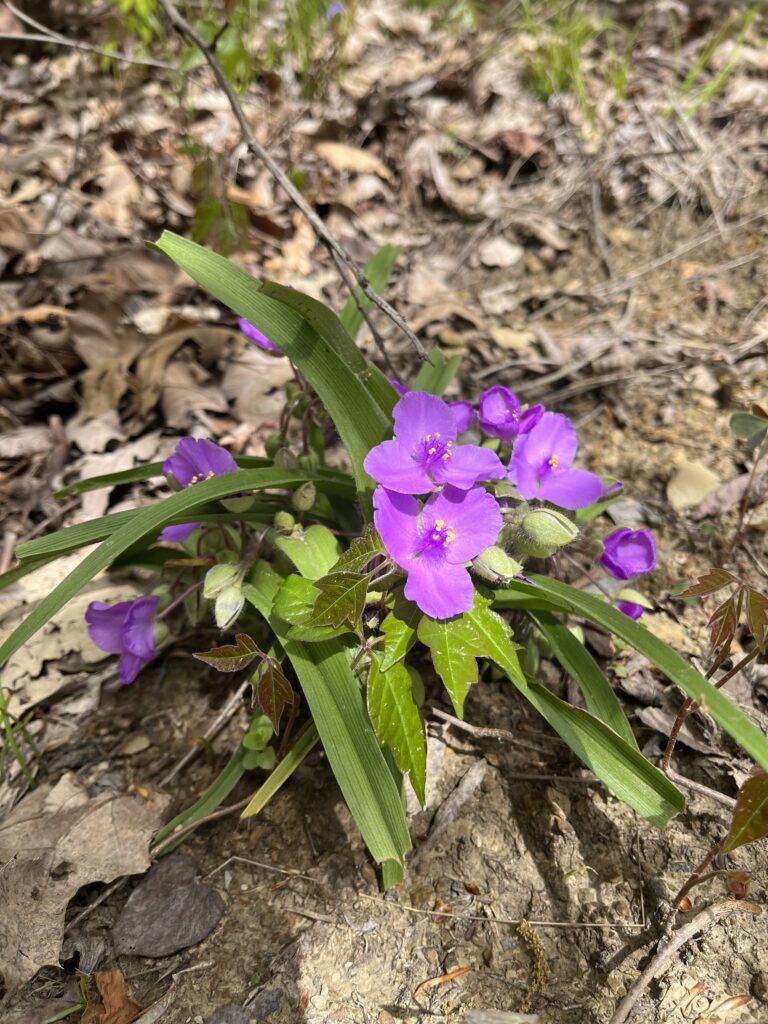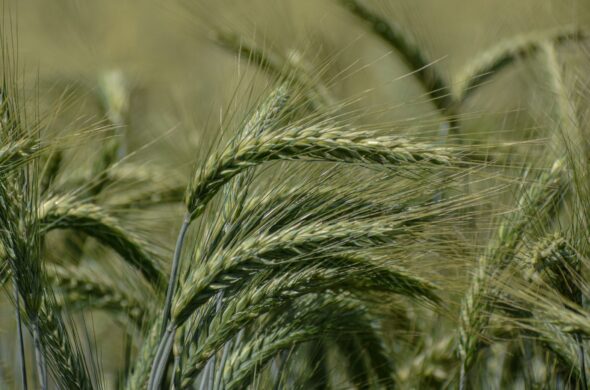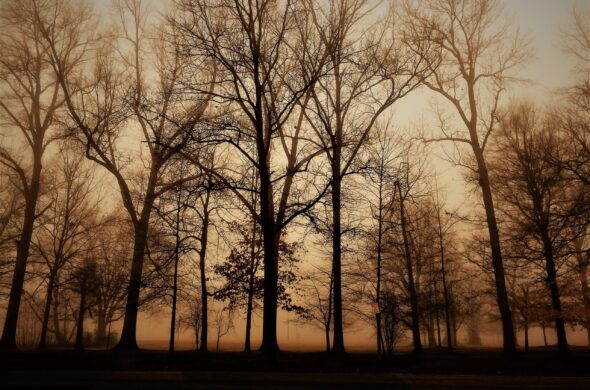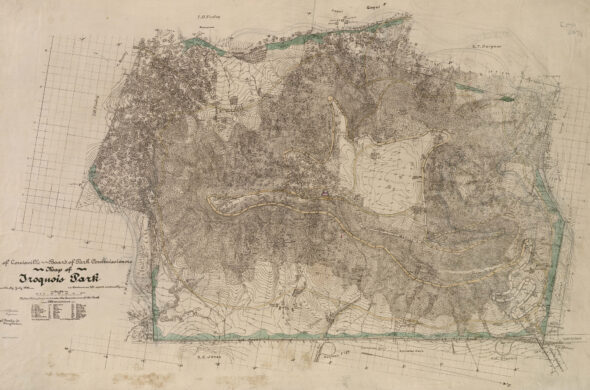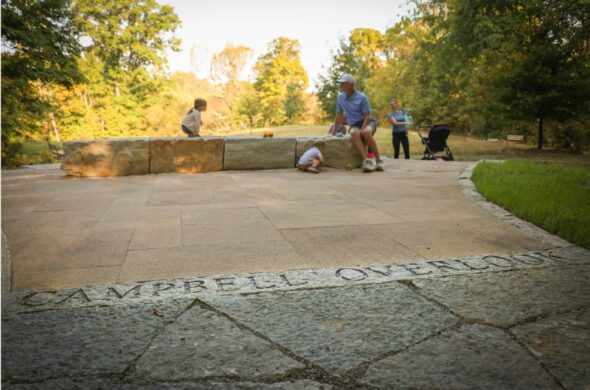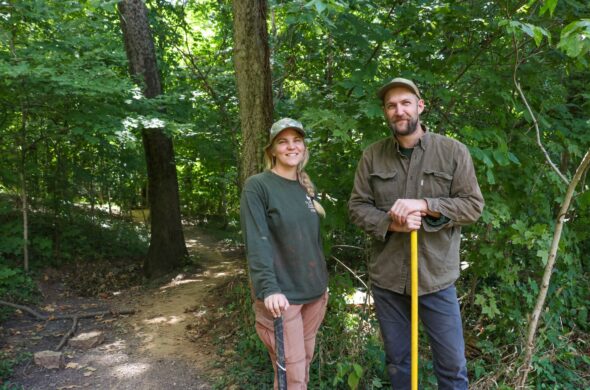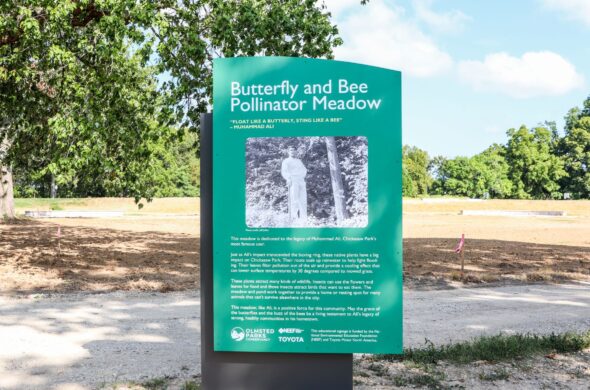Natural areas management is a never-ending battle in which we subdue introduced and invasive species so native habitats can thrive! Here’s a look at our focus for June.
The Bad – Chaff Flower
Now is the time to start identifying and removing Chaff Flower (Achyranthes japonica)! This perennial herbaceous plant grows densely, forming monocultures and crowding out native plant species. Chaff flower is a habitat generalist that can grow nearly anywhere, in partial shade to full sun, in drier areas and wetter areas. It is typically found in flood plains, along roadsides, and makes its way further into the woodlands by seeds hitch hiking on wildlife and folks wondering off trail.
Chaff flower grows 3-5 feet tall and can have a spread of nearly 3 feet. Leaves are oppositely arranged and elliptical shaped with pointed tips. The leaves have entire margins with distinct, arching veins; two traits that can help differentiate it from native lookalikes (such as White Snakeroot and Jumpseed). The stems are squarish, and nodes frequently have a reddish color. The flowers are tiny and clustered on a bottle-brush like spike, which elongates as the flower matures. Later as seeds are formed, these elongated spikes assist the seeds in contacting those who pass by where they hitch a ride. Even during the winter, the plant stems can be found upright, although leafless, with remaining seeds waiting to spread. Seed dispersal can also be facilitated by mowing and flood events.
As common other invasive plants, Chaff is known for its high seed production, where each plant can produce over 1,000 seeds. In areas that have become a monoculture, there can be hundreds of thousands of seeds! Chaff flower does not pull out of the ground easily, like garlic mustard, instead it has a root collar that must be dug out for removal of the plant. Repeated cutting can prevent seeding, but it will not kill the plant. Therefore, the best management practice for this plant is chemical treatment before flowers form. This plant is spreading fast throughout the park system but we are deploying all of our best management practices to ensure it does not take over our woodlands and landscape areas!
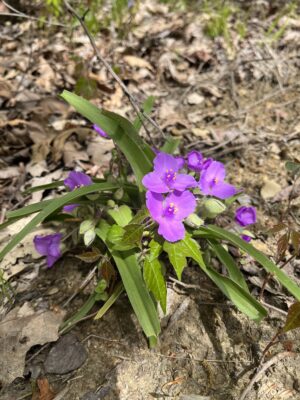
The Good – Spiderwort
We often talk about plants that have been brought to our area from other countries, but what about a plant native to our region that has been introduced across the world? That would be our beloved spiderwort! This flower was first brought to Europe during Colonial times, although today it can be considered invasive to some of those countries. But before you start thinking of this flower in a bad light, let’s turn a new leaf!
In our Olmsted Park System, you may find Virginia Spiderwort (Tradescantia virginiana) and Zigzag Spiderwort (Tradescantia subaspera). Both are clump-forming, herbaceous perennials native to the central and eastern United States. They grow wild along woodland edges, shady streams, and throughout the woodlands in general. Spiderworts can grow in part sun to shady areas, in a variety of soil types, so you may find them in a variety of places throughout the parks. A main difference between these species is the width of the leaves, with the Virginia Spiderwort having leaves up to an inch wide, while the Zigzag has leaves up to two inches wide. Also nodding to its common name, the Zigzag Spiderwort stem makes slight direction changes between internodes, creating a zigzag look (the Virginia has a more straight up appearance). Both species have flowers than can vary in color from bluish purple to pinkish purple, even white on rare occasion!
We also enjoy spiderworts as they can be a native plant that people use in their gardens without even knowing it is native! Gardeners may enjoy the plants’ deer resistance, as well as the native bees and butterflies it attracts. After initial blooms, the foliage may start to wither and can be cut back to encourage more blooms later in the season. Even when cut back, spiderworts can still spread easily throughout the landscape due to self-seeding and underground rhizomes that send up new shoots.
-Lauren Hendrickson, Natural Area Manager
Find something similar: News
